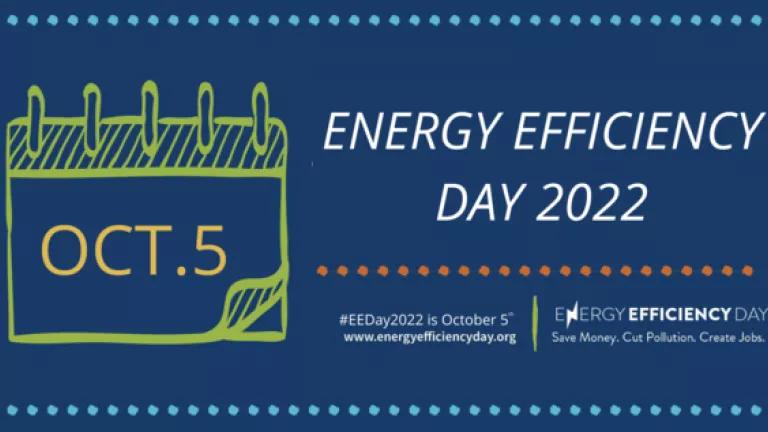
New guidance from the Federal Energy Regulatory Commission (FERC) will help states develop more reliable (and affordable) compliance approaches to the Clean Power Plan's limits on power plant emissions. FERC, which regulates the high-power electricity transmission grid, issued the guidance in the form of a staff white paper. It recommends sensible, technically grounded principles for transmission grid planners and others to use when analyzing, or "modeling," the potential effects of the Clean Power Plan (CPP) on the power grid. Since states are relying on these modeling results to help shape their CPP compliance plans, better modeling will lead to better state plans.
FERC emphasized in the paper that while it does not have a formal role in CPP compliance, its agreement to help the U.S. EPA monitor the CPP's grid reliability aspects will be better informed by modeling efforts that satisfy the principles in the guidance paper. FERC also said that it might hold technical conferences or take other action based on its guiding principles.
What problem does FERC's guidance address?
The FERC guidance addresses a clear problem, which is that some grid planning regions' recent assessments of the CPP have been flawed, inconsistent, or in some cases have spurred unfounded concerns that the CPP could decrease the reliability of electric service. For example, some studies have assumed erroneously high costs for wind and solar power to replace the fossil fuels that emit carbon when burned to make energy, and some have failed to look at a reasonable range of "what if" possibilities for CPP compliance. Flawed grid studies of the CPP can identify reliability issues where none exist, and steer states in the wrong direction for CPP compliance planning.
FERC's guidance benefits states
Technical analyses of the high power grid can be complicated business. FERC-regulated grid planners are among the few organizations capable of running the computer models and detailed analytical studies to assess the effects of the range of state CPP compliance strategies on the power grid and carbon emissions. Many states already are looking to MISO, PJM, and other grid planners for direction as they develop plans to comply with the CPP. The FERC guidance should ensure more accurate and comprehensive grid modeling, which in turn will improve states' CPP compliance decisions.
What does FERC's guidance say?
To address modeling problems and inconsistencies, FERC's guidance stresses two broad priorities: a transparent, accessible study process and analytically sound modeling practices. From these two priorities FERC identified four guiding principles:
- Transparency and Stakeholder Engagement - openness and meaningful stakeholder engagement are key to achieving representative studies. As FERC explains, stakeholder engagement in every step of the process will improve the technical analysis, better identify state compliance approaches, and more "reasonably" identify the reliability implications of each option.
- Study Methodology and Interactions Between Studies - No single study can capture all aspects of a dynamic and evolving electric grid. FERC's guidance stresses the value of integrating different grid studies, such as by using outcomes from one study as inputs to another study. Recognizing the long compliance time for the CPP, FERC also recommends adjusting key data over different time periods. These and related recommendations will sharpen and improve long-term grid studies of CPP compliance options. (For people like me who think grid modeling is cool, the appendix to the white paper includes a useful description of the different types of grid modeling tools.)
- Study Inputs, Sensitivities, and Probabilistic Analysis -This category is at the center of what I think of as the modeling "black box." Choices of inputs and assumptions that go into this box can dramatically affect the study results that come out and decisions based on those studies. For example, using outdated cost assumptions for increasing wind and solar power in the electricity mix could misleadingly steer states away from compliance strategies that prioritize those resources.
Getting costs right is one example of the broader need to develop an accurate "base case" of the so-called "business as usual" conditions absent the CPP. An accurate base case serves to isolate the effects of the CPP compared with what would have happened without it. Seems obvious, yet remarkably some studies (especially by outside parties) don't even include a base case, let alone a reasonable one. (And "probabilistic analysis" is simply another way of examining the relative likelihood of future outcomes.)
- Tools and Techniques - The fact that states have many options for complying with the CPP is no defense to grid planners pleading the inability to model the options. As FERC explains, the changing electric grid requires that grid planners, utilities, and others develop the modeling tools necessary to better analyze the grid's evolving "complex interactions."
For example, given the increasing use of natural gas as a fuel source, FERC urges grid planners to develop better ways to model the interactions between the natural gas and electricity markets. The same could be said for wind and solar power, battery storage, and energy efficiency - as they grow in significance, better tools may be necessary to more accurately model their value to the grid and the impacts.
FERC's guidance is timely
States' first CPP compliance deadline is September 2016. Regional grid planners are in the thick of modeling the CPP, as are a number of states, utilities, and other stakeholders. FERC's guidance will help to prevent faulty CPP studies in the future, and will produce more representative data and outcomes for states to consider as they develop CPP compliance plans. The guidance also should improve the consistency and integration of studies across wider geographic regions. For those reasons, FERC's guidance is both welcome and timely.




